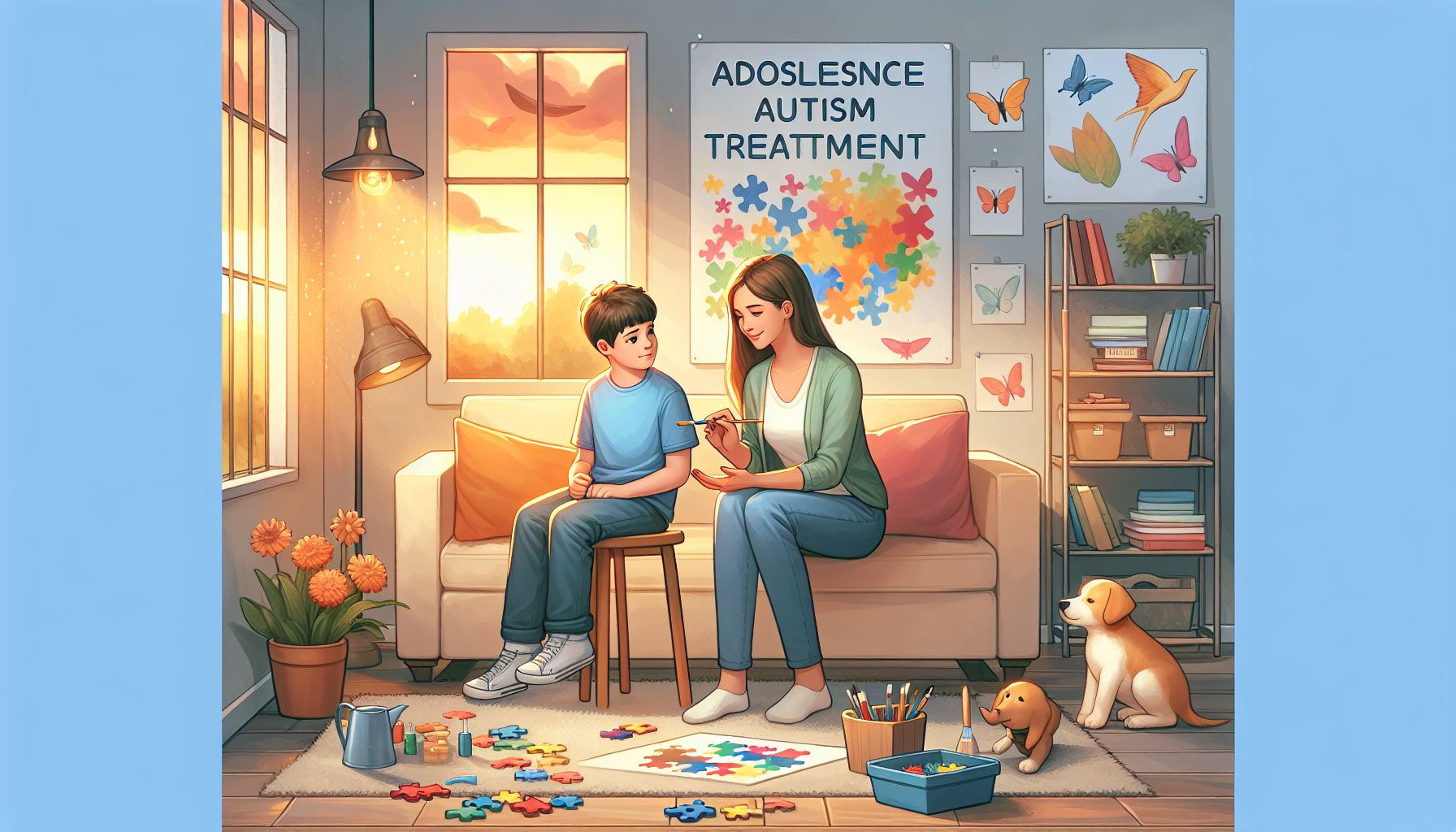Autism Spectrum Disorder (ASD) is a neurodevelopmental condition that affects 1 in 54 children in the United States, as per the Centers for Disease Control and Prevention (CDC). It characterizes a broad range of conditions associated with challenges in social skills, repetitive behaviors, and speech and nonverbal communication. These challenges can intensify during adolescence, making it a prevalent concern for many families. This post explores the essential aspects of autism treatment in adolescence to help navigate this challenging and significant period.
Understanding Autism in Adolescence
Adolescence is a time of significant change for any child. For those on the autism spectrum, these changes can be even more substantial. They might find dealing with the challenges of adolescence—like the onset of puberty, increased social pressures, and a shift in academic expectations—particularly overwhelming. Hence, your understanding, patience, and specialized approaches can prove beneficial in their overall development and well-being.
Crucial Techniques for Autism Treatment in Adolescence
Cognitive Behavioral Therapy (CBT)
Cognitive Behavioral Therapy (CBT) is a type of therapeutic treatment that can be useful for teens with autism. This technique aids in understanding their thoughts, feelings, and behaviors better. CBT can be particularly helpful for those struggling with anxiety, a common co-occurring condition in adolescents with autism. By teaching coping skills and challenging harmful thought patterns, CBT can significantly lessen anxiety levels in autistic adolescents, ultimately improving their quality of life.
Social Skills Training
Improving social skills is another vital aspect of autism treatment. As kids grow older, they are expected to engage in more complex social interactions. Social Skills Training can help teens with autism navigate these situations with more confidence. These programs often involve a mix of role-playing exercises, video modeling, and real-life practice to teach teens necessary social skills like starting a conversation, responding to social cues, or handling conflict.
Behavioral Intervention
Behavioral interventions are an effective method of treatment for adolescents on the autism spectrum. Techniques such as Applied Behavior Analysis (ABA) utilize positive reinforcement to encourage beneficial behaviors and lessen problematic ones. By being consistent, clear, and patient, you can help your teenager understand the cause and effect relationships between their actions and consequences, fostering independence and personal responsibility.
Occupational Therapy
Some adolescents with autism may struggle with basic day-to-day tasks. Occupational therapy can be instrumental in teaching essential daily living skills like dressing or cooking. Moreover, occupational therapists can address sensory processing issues common in autism, helping adolescents cope with overstimulation or enhancing their ability to process environmental factors more effectively.
Medication and Autism
While there’s no cure for autism spectrum disorder, some medications may help manage its symptoms. These primarily include stimulants, antipsychotics, and antidepressants. However, the decision to use medication should always involve a thorough conversation with a healthcare professional. They will look at factors like the severity of symptoms, the child’s age, and possible side-effects before prescribing any medication.
Supportive Environment at Home and School
Both home and school environments play a critical role in the treatment of autism in adolescents. You can support your child by maintaining predictable routines, setting clear and consistent expectations, and encouraging independence. Avoid overloading them with too much information and ensure they have a safe, quiet space to retreat to during periods of overwhelm.
In school, an individualized education plan (IEP) can be highly beneficial in helping your teenager navigate academic life. With activities and goals tailored to your child’s unique needs and abilities, an IEP can boost their confidence and engagement in education.
Seeking Professional Help
Treating autism requires a multi-disciplinary approach involving different professionals. Consider reaching out to psychologists, therapists, social workers, and psychiatrists to determine the best treatment plan. Remember, every child is unique, and what works for one might not work for another. A healthcare professional can guide your family towards the most effective strategies and treatments for your adolescent’s specific circumstances.
Coping with the Diagnosis
Receiving an autism diagnosis for your child can be challenging. You’re not alone, and it’s essential to remind yourself that there’s a vast network of resources out there, from support groups to therapy services. By staying informed and proactive, pursuing a variety of treatment options, and providing your adolescent with an understanding and supportive environment, you will play a vital role in helping them thrive.
In conclusion, adolescence is a crucial stage in autism treatment. With the right combination of therapy, medication (if necessary), supportive environments, and professional help, your adolescent can learn to manage their autism symptoms more effectively and enjoy a higher quality of life. Keep in mind that patience and understanding are the keys to help your adolescent steer their path through this crucial period.

